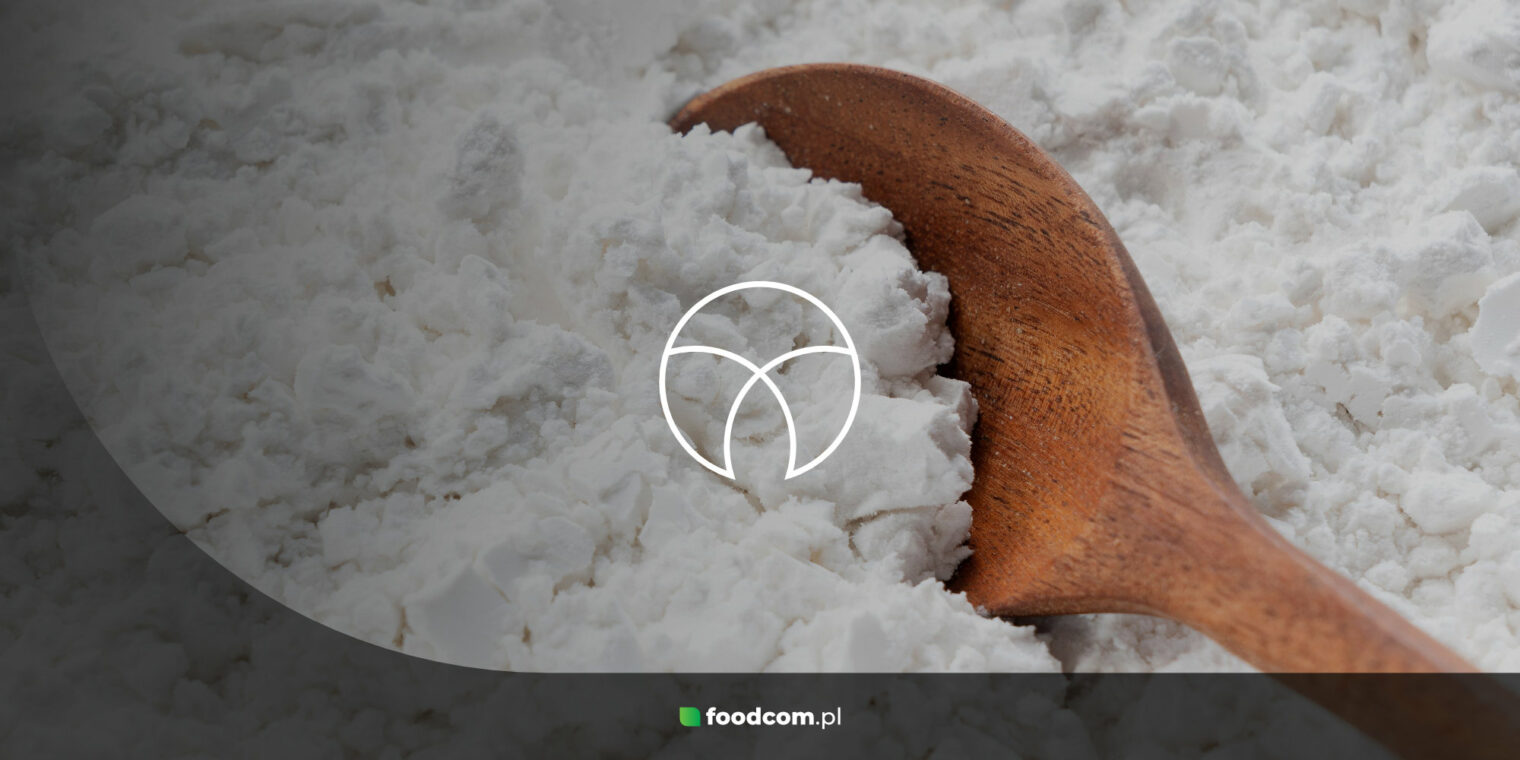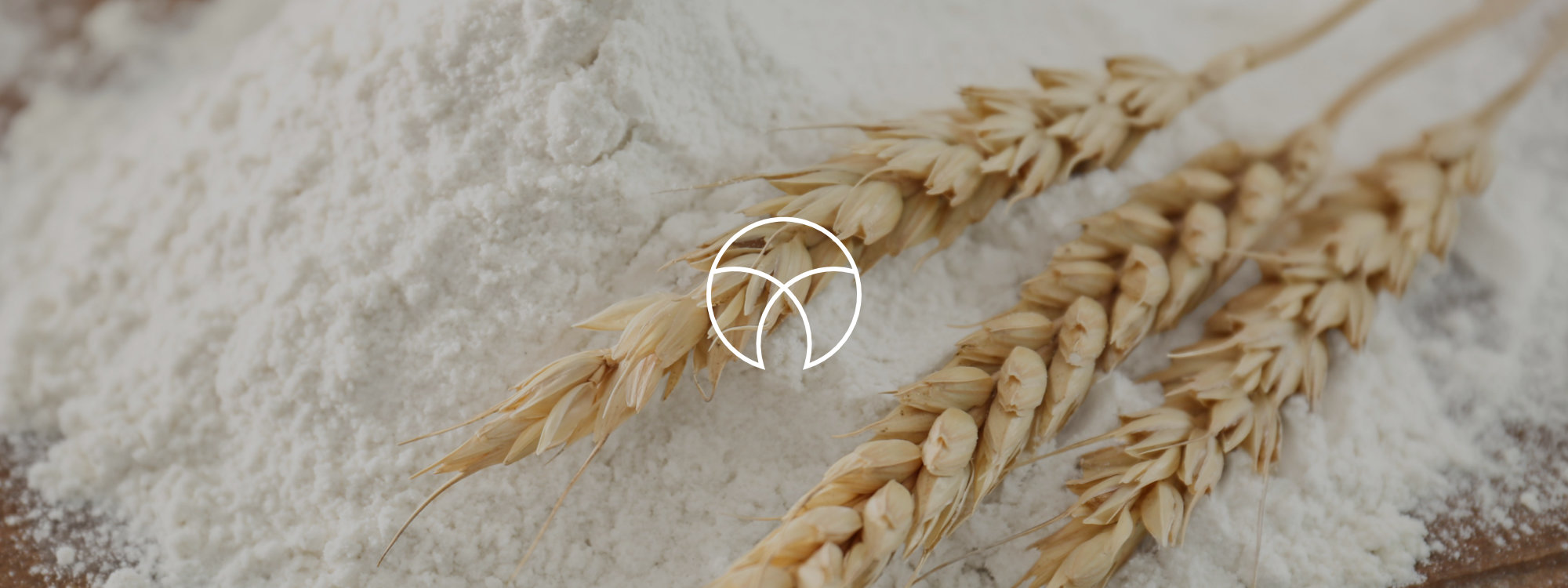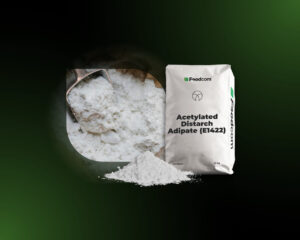- Modified starch is produced by physical, chemical or enzymatic modification of native starch.
- It has even better texturizing properties than native starch.
- Modified starch is used in the food, pharmaceutical, paper and chemical industries.
What is modified starch?
Modified starch is native starch that has been treated so that its properties have been changed. Native starch belongs to the carbohydrates and consists of glucose molecules. Depending on which plant it comes from, one can distinguish between corn starch, potato starch or wheat starch, among others. These starches undergo one of three types of modification to produce modified starches. Want to learn more about the properties of modified starch and which type is best for your business? Then be sure to read on!
Types of modified starch
Depending on how the starch has been modified, a distinction can be made:
- Physically modified starches – are formed by exposing the starch to heat, pressure, electricity or radiation. This results in a change in the spatial structure of the chains. Physically modified starch is added to foods, but is not treated as an additive, but as a food ingredient with a thickening function, and therefore does not have an ‘E’ number.
- Chemically modified starches – starch is subjected to chemical processes such as oxidation, esterification or etherification. The resulting starches are treated as food additives with the numbers E1400-E1500.
- Enzymatically modified starches – the modifications are carried out with the help of enzymes, resulting in maltodextrins. Like physically modified starches, they are recognized as food ingredients.
All these modifications do not interfere with the structure of DNA, so modified starches do not belong to genetically modified foods (GMOs).
Properties of modified starch
Modification of starch is mainly aimed at obtaining additional desirable properties that could be useful in industry. Modified starches are in the form of a white powder and are well soluble in both cold and hot water. In addition, unlike native starches, they resist the process of starch retrogradation. This prevents undesirable changes in the consistency of the products. Modified starches are also characterized by the fact that they are stable in alkaline and acidic environments.
In general, modified starches have texturizing properties – they have the ability to bind water, gelatinize and prevent bulk product caking.
Applications of modified starch
Modified starch has many properties that can be used in the food industry. This is the most popular application, but modified starches are also useful in other industries. They are used in:
- food industry,
- pharmaceutical industry,
- cosmetic industry,
- paper industry,
- chemical industry.
In the food industry modified starches help to bind moisture and improve viscosity of products. Therefore, they are often used in baking. They are also used as thickeners and stabilizers in sauces or soups. Modified starches are also used in ready meals and desserts – they allow thickening when cold water or milk is added without forming lumps. They are also found in frozen foods and low-fat foods.
In the pharmaceutical industry, modified starches are used as excipients in the manufacture of medicines, while in the cosmetics industry they are added to pastes, dry shampoos or bath starches.
Modified starches are also added to adhesives and help in paper production.
The most common examples of modified starches
Acetylated distarch phosphate (E1414)
Is a thickening and stabilizing agent. Acetylated distarch phosphate (E1414) can be found in sauces, yogurts, cake powders and fruitcake fillings.
Acetylated Distarch Adipate (E1422)
Acetylated Distarch Adipate (E1422) is a thickening, gelling and texturizing agent. It has excellent freeze-drying stability and resistance to low storage temperatures. It is used in the production of frozen meat pies, sauces and fruit fillings. You can read about its use in other industries in our article!
Hydroxypropyl Distarch Phosphate (E1442)
Hydroxypropyl Distarch Phosphate (E1442) is used as a stabilizer, thickener, binder and emulsifier in food and cosmetic processing. It is used in the production of ice cream, dressings, marinades, frozen desserts and cakes. If you want to learn more about this unique substance, be sure to read our article!
Why Foodcom?
Our great team of Sales Support will help our Traders conduct the contract and business deals in a smooth and efficient way to ensure the best quality service to all our Business Partners. Our logistics team will take care of transportation and the financial department will be responsible for all matters connected with the financial part of the deal. Do not hesitate! Contact us.









